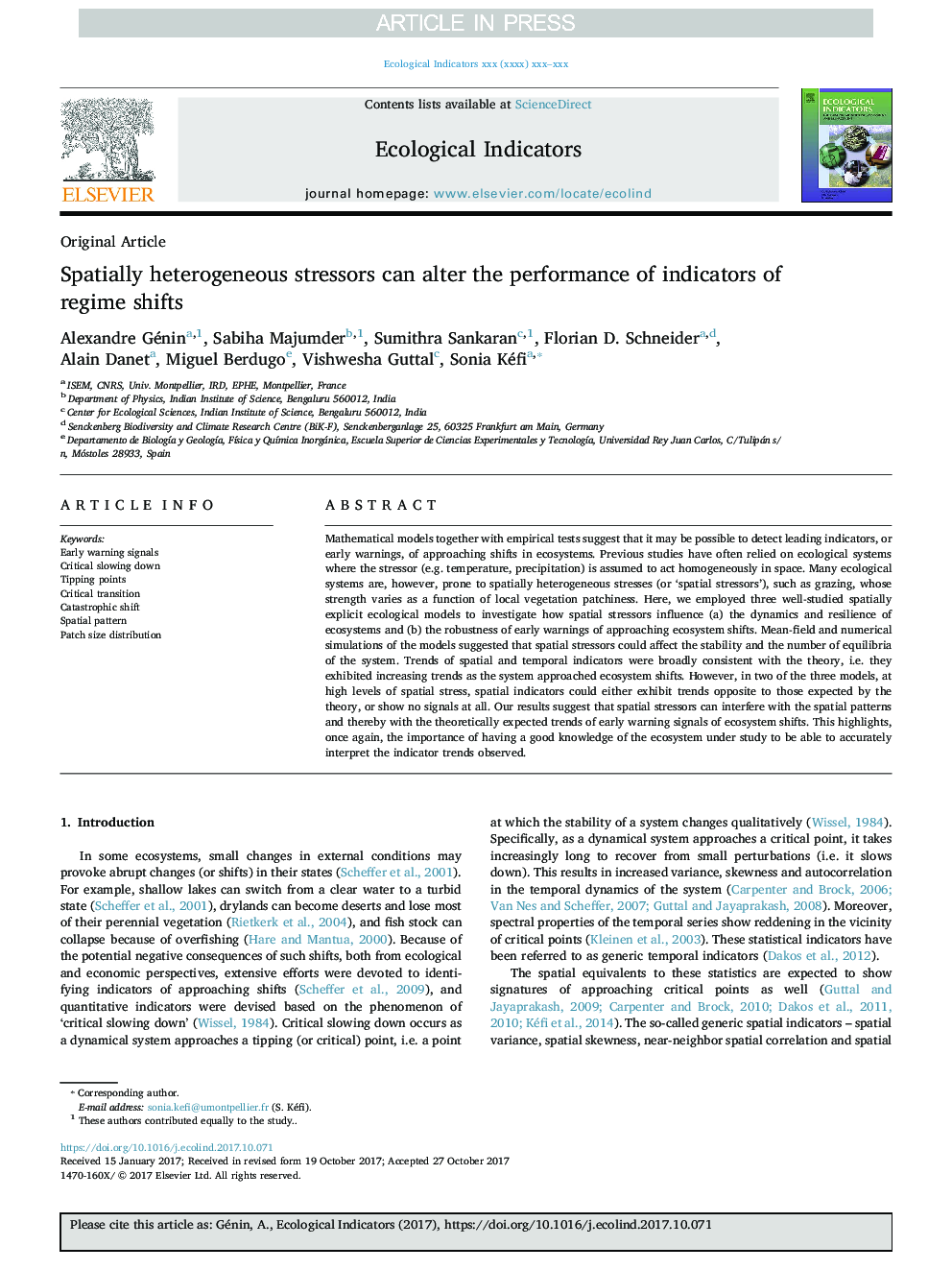| Article ID | Journal | Published Year | Pages | File Type |
|---|---|---|---|---|
| 8845128 | Ecological Indicators | 2018 | 14 Pages |
Abstract
Mathematical models together with empirical tests suggest that it may be possible to detect leading indicators, or early warnings, of approaching shifts in ecosystems. Previous studies have often relied on ecological systems where the stressor (e.g. temperature, precipitation) is assumed to act homogeneously in space. Many ecological systems are, however, prone to spatially heterogeneous stresses (or 'spatial stressors'), such as grazing, whose strength varies as a function of local vegetation patchiness. Here, we employed three well-studied spatially explicit ecological models to investigate how spatial stressors influence (a) the dynamics and resilience of ecosystems and (b) the robustness of early warnings of approaching ecosystem shifts. Mean-field and numerical simulations of the models suggested that spatial stressors could affect the stability and the number of equilibria of the system. Trends of spatial and temporal indicators were broadly consistent with the theory, i.e. they exhibited increasing trends as the system approached ecosystem shifts. However, in two of the three models, at high levels of spatial stress, spatial indicators could either exhibit trends opposite to those expected by the theory, or show no signals at all. Our results suggest that spatial stressors can interfere with the spatial patterns and thereby with the theoretically expected trends of early warning signals of ecosystem shifts. This highlights, once again, the importance of having a good knowledge of the ecosystem under study to be able to accurately interpret the indicator trends observed.
Related Topics
Life Sciences
Agricultural and Biological Sciences
Ecology, Evolution, Behavior and Systematics
Authors
Alexandre Génin, Sabiha Majumder, Sumithra Sankaran, Florian D. Schneider, Alain Danet, Miguel Berdugo, Vishwesha Guttal, Sonia Kéfi,
